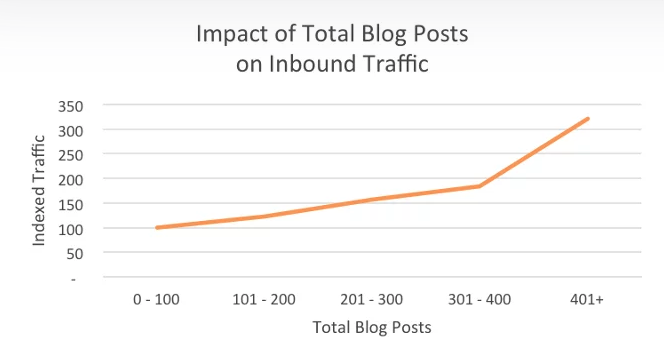Writing SEO articles is a whole lot easier if you use an SEO plugin such as Yoast SEO. The plugin reminds you to place your keywords in your titles, description, images and throughout your copy. SEO means Search Engine Optimisation. To optimise your content for the search engines doesn’t always mean you’ll get a top listing on Google though, although that would be nice!
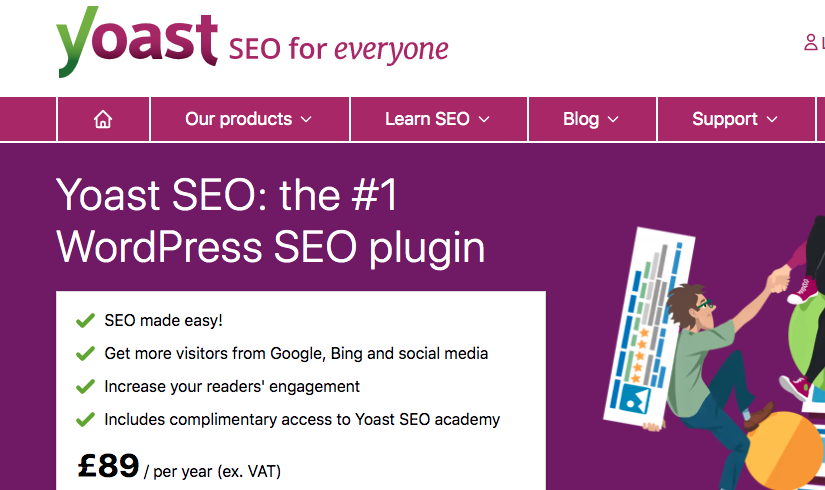
It may be very difficult to get a top placed listing on the first page of Google. This will depend on your topic and the keywords you choose for your article’s title. It also depends on the competition for your chosen keyword. If there’s a huge volume of competing websites for the term, your chances of a top listing will diminish. So how can you give yourself a better chance of free traffic through SEO?
Writing SEO Articles
Writing SEO articles won’t guarantee you a top listing. There’s just too much competition for everyone to rank on top! Of course if your content is better than the competition, you’ll rank higher, right? Well not always no. Some websites have hundreds of thousands of backlinks and huge authority. Even with content which is inferior to your own, they will outrank you!
To give yourself a better chance of ranking your content, you could spend thousands on an SEO company, building backlinks and creating content to maximise your domain’s authority. But it would still take ages to outperform the top ranking sites. But there’s a cheaper and easier solution. It’s to use the “low hanging fruit”.
The “low hanging fruit” are the long tail keywords with lower SEO difficulty. Long tail keywords typically contain three or more words and have fewer competing websites for those particular terms. The shorter phrases of 2-3 terms are usually more competitive.
Writing SEO Articles – Find Long Tail Keywords First
I use Google’s keyword planner to find long tail keywords with low SEO difficulty. Start with your main keyword and scroll through the results on the planner. You can also click on the tab marked “Avg monthly searches” until the search volume drops. When you see fewer monthly searches for terms in your niche, you’ll probably also notice that those are the longer tail keywords which have less competition on Google.
While you may want more traffic to your site, going after the keywords with a huge search volume will seldom have the results you desire. These keywords are super competitive and so chances are super slim you’ll get any traffic from the search engines. But if you target the log hanging fruit your chances of ranking are much higher and this gives you more opportunity to get the free traffic using Search Engine Optimisation.
Found A Keyword
Once you’ve found a keyword which is suitable, you can check on Google to see what the difficulty is like. Type your keyword into the search bar and look for a number at the top of the screen. This should give you an idea of the relative competition.
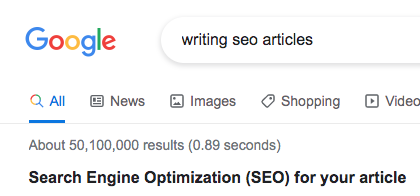
Also type the same term in with quotes around it to give you an idea of the phrase match competition.
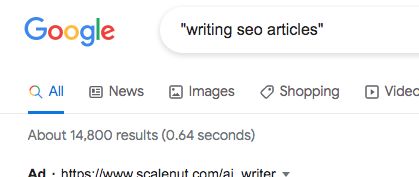
Using Yoast SEO
Once you have found a good keyword which you think you have a chance of ranking for, you can start writing. To optimise for keywords I use Yoast SEO which is a free plugin for WordPress. If you don’t have WordPress, you can optimise your posts by using your main keywords in your:
- Titles
- Image alt attributes
- Meta description
- SEO title
- Meta Description
- Throughout your copy
A plugin makes this job much easier and gives you a number of other benefits such as data on keyword use.
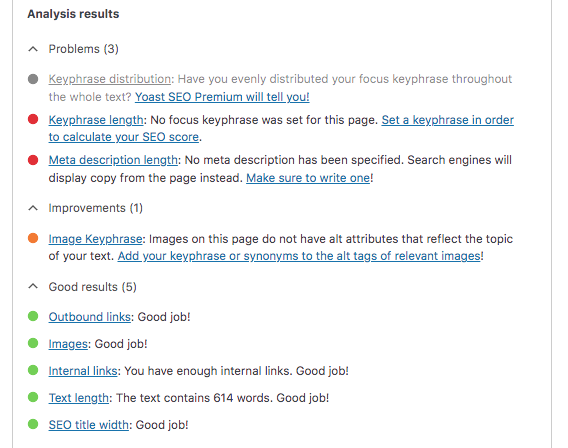
You can also use deep linking within newer content you post to link back to your older content using keywords in the links. This tells the search engines what keywords are most relevant for your content and which terms you want to rank it for.
Other SEO Factors At Play
By targeting long tail keywords with low SEO difficulty, you are giving yourself a better chance of obtaining a high ranking on Google (or other search engines). Of course you’ve never guaranteed a top listing. By writing lengthy posts and linking back to them from other sites and your own, you’re also giving yourself the best chance to get rewarded for your SEO.
There’s many factors at play when it comes to SEO:
- Domain age
- Site authority with Google
- Back link profile – number of links, age and where they come from
- Social media presence
- Visitor’s interaction on your content
- Click away rate
- Plus many more
- The volume of content on your site
To give your content the best possible chance, aim to outdo other content you find ranking on or near the top of the search listings. Offer more value and write longer posts. The long term effect of having super high quality content on your site is that other people will share and link to it naturally over time. This in turn will boost your rankings and SEO score.
SEO is a long term thing so start with writing high quality content and the best possible posts you can. As your content grows over time, you should also see an uptick in traffic as you pass the 400 posts mark.
